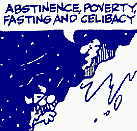| |||||
|
| Reservations |
|
Hagar's ClimbThe creator of the Hagar family series, Dik (Richard) Browne (1917-89), was an American cartoonist. Browne told that the often confused Hagar was Norwegian - a reluctant taxpayer with amusingly imperfect success in dealing with his job – looting and pillaging – and home life, dealing with the comme il faut. Hagar won worldwide recognition after being created and launched in 1973. 

 "The likable one learns to ask for a second opinion to avoid getting stuck in the next best things of life." [Maxim] Now compare the slope scene above with a Taoist image where a whole is divided in two parts. A whole may be represented by some visual image: a circle, a square, and oval and so on.

The slopy illustration conforms in main outline to the traditional yin yang emblem, but for its squareness and the dividing or meeting zone between yin and yang: the traditional emblem has it curved, like a mirrored S.
Note how easily the common tangram circle of Taoism may be changed into a square:
|
|
| The "square of the world" shows world darkness (yin), the heavenly brightness (yang), and a way of balance or reconciliations and much else: (Tao). The added words are deep Chinese terms that can be up to perfect matches at times, depending on the settings. For the sake of meditation or hibernation some dig into snowy slopes. Ice bears on Svalbard do. Many yogis enter caves in mountan sides too - snowy or not. The bird's-eye'view of the formidable Viking backup philosophy of Taoism is now almost completed. Best Things
A. A SEARCH matters. The most welcome
answers may fit the heart too. The rest may not be as good as that. Little
by little one may see it.
B.
THIS is quite a molesting viewpoint. Yet there are others. Buddha endoreses a way (here: climb) that avoids extremes, be they of fasting, merry-making, gambling, and so on.
C. "TO WHAT key of happiness?" - There can be many odd disciplines, many kinds of trainees too. And the likeable one learns to ask for a second opinion to avoid getting stuck in the next best things of life. |